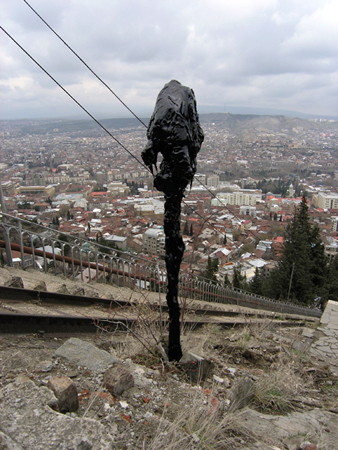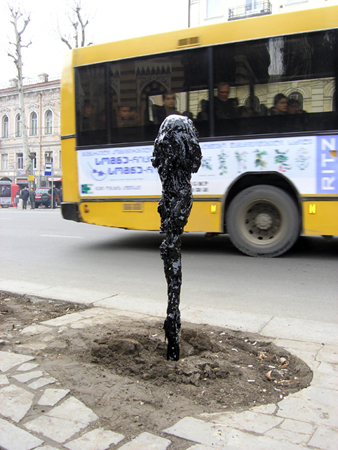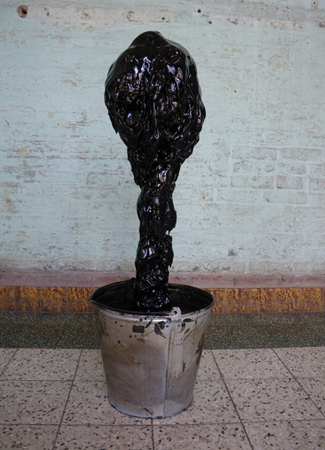Peak Oil
Maarten Vanden Eynde
Oil Peak, 2006
Oil Peak was produced during the third Enough Room for Space (ERforS) project in Tbilisi, Georgia where the most severe protests since the Rose revolution were taking place. In 2003 the new Georgian president Mikheil Saakashvili called back his fellow country men, who fled Georgia in the past decades, to come and help rebuild the once prosperous and wealthy country into a modern western democracy. ERforS decided to respond to this call as well and check out how a new democracy was being introduced or rather implanted and what the side-effects are of such an enormous political and sociological shift. Ten ‘oil eruptions’ were planted on several locations throughout the city. In front of the parliament it caused a surprising commotion as the protesting crowd appropriated the work as a ‘black rose’, symbolizing the failure of the Rose revolution.
Oil Peak, 2008
Peak oil is the point in time when the maximum rate of global petroleum extraction is reached, after which the rate of production enters terminal decline. The concept is based on the observed production rates of individual oil wells, and the combined production rate of a field of related oil wells. According to Mathew Simmons, author of Twilight in the Desert: The Coming Saudi Oil Shock and the World Economy, “…peaking is one of these fuzzy events that you only know clearly when you see it through a rear view mirror, and by then an alternate resolution is generally too late.” Currently there is no consensus on whether Peak oil occurred already, or is still to come.


